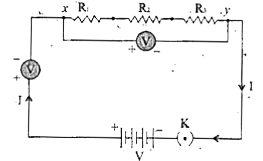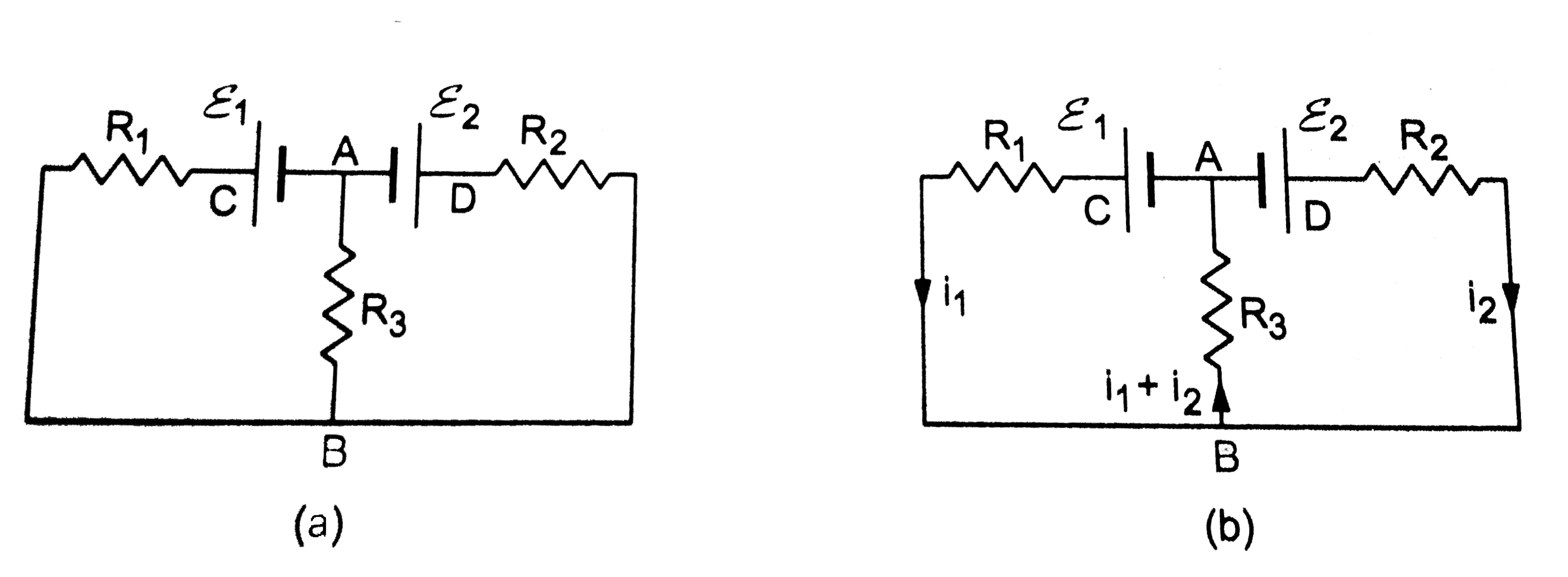Derive the relation R=R1+R2+R3 when three resistors R1,R2andR3 are connected in series in an electrical circuit.

Let the potential difference across the resistors R1,R2andR3 are, V1,V2andV3 respectively. In the electric circuit shown above, let I be the current through the circuit. In this case, the current through each resistor is also I and the potential difference across a combination of resistors is equal to the sum of potential differences across this individual resistors. That is
V=V1+V2+V3 ....(1)
If the resistors R1,R2 and R3 are replaced by an equivalent single resistor R, such that the potential difference V across it, and current I through the circuit remain the same, then, applying the Ohm.s law to the entire circuit and three. resistors separately, we have
V=IR ...(2)
V1=IR1 ....(3)
V2=IR2
V3=IR3 .....(4)
By adding (3), (4) and (5), we get
V1+V2+V3=IR1+IR2+IR3
or V1+V2+V3(R1+R2+R3) .
By using equation (1)
V=I(R1+R2+R3)
By using equation (2)
IR=I(R1+R2+R3).
or R=R1+R1+R3
Similar Questions
Knowledge Check
- Question 1 - Select One
In an electric circuit three resistors R1,R2andR3 are connected in series such that R2=R3. IF V1,V2andV3 are the voltage across R1,R2andR3 respectively , then
AV1=V2BV2=V3CV1=V3DV1=V2=V3
Establish a relationship to determine the equivalent resistance R of a combination of three resistors having resistances R1,R2andR3 connected in series.
(b) Calculate the equivalent resistance R of a combination of three resistors of 2Ω,3Ωand6Ω joined in parallel.View SolutionFind the currents going through the three resistors R1,R2 and R3 in the circuit of figure.
 View Solution
View SolutionThree resistors R1,R2 and R3 are to be combined to form an electrical circuit as shown in the figure. It is found that when R1R2andR3 are put respectively in positions A, B and C, the effective resistance of the circuit is 70 ΩWhen R2,R3andR1 are put respectively in position A, B and C the effective resistance is 35Ω and when R3,R1andR2 are respectively put in the position A, B and C, the effective resistance is 42Ω
If R1,R2 andR3are put in series, the effective resistance will beView SolutionWrite the expressions for the equivalent resistance R of three resistors R1,R2,andR3 joined in (a) parallel, and (b) series.
View Solutiontwo resistors R and 2R are connected in series in an electric circuit. The thermal energy developed in R and 2R are in the ratio
View SolutionTwo resistors R and 2R are connected in series in an electric circuit. The thermal energy developed in R and 2R are in the ratio
View Solutiontwo resistors R and 2R are connected in series in an electric circuit. The thermal energy developed in R and 2R are in the ratio
View Solution

